It doesn’t matter what sort of walk we go on, we always take a few essentials along with us. These items are weather independent, and what we consider an absolute must for any trek. Most of them don’t take up any room, but can be lifesavers.
We say what’s in the bag, but first maybe we should talk about the bag.
The rucksack is part of you, so the fit is paramount. It needs to be comfortable whether you are carrying 5 or 15kg. There are bags specifically designed for the different shapes of men and women, try them on, load them up, but above all else make sure they are comfortable. Some of the better bags also come in different sizes.
There are other aspects at the top of our list; colour and brand….only kidding, but I am sure if Lidl made a rucksack it would be a good one.
Look for a good warrantee, some camping equipment manufacturers provide lifetime warrantees, sound too good to be true, but when I have tested them they have replaced the product.
The quality of the fabric. Most rucksacks are made from a pretty tough plastic based polyester fabric. Mine is a mix of and Kevlar, the stuff they make bullet proof vests out of. Super tough, but these things need to be, they get wet, thrown around, sat on, fallen on, and the last thing you need is for them to split and all the stuff to fall out.
Both our sacks are what are called alpine sacks. They are very simple, single compartment with no extra pockets on the outside, except at the top. They are thin and hug the back. This is important, especially when you are climbing. The weight is kept close to you which doesn’t change your centre of gravity so you can maintain balance.
You should have good padding around the shoulder straps and the waistband, and straps to pull the load into the body and to compress the bag. Both of these are important, the bag might not always be full, so you don’t want the contents falling around the empty space pushing you off balance. It is important to load the bag properly, with the heaviest items close to the body and midway up. Too high and they can cause swaying and will compromise your balance. Too low, and they will feel heavier, the weight should be balanced between your shoulders and your waist.
The frame is important, this gives the bag rigidity and will contour the body. They used to be on the outside of the sack, now they sit within pockets on the inside. They are usually aluminium. After two years of use one of mine broke. I sent a photo. It was replaced, no questions asked. Good service.
Also consider the weight of the bag. If making it bombproof also makes it weigh a tonne, is it worth it?
We also like to clip our trekking poles and ice axe to the outside, but nothing else. Don’t strap errant objects, sleeping bags, pots and pans, sombreros, fluffy dice to your pack…you look an idiot, they hit people when you turn abruptly, and they knock you off balance.
So what do we have;
Susana has a pack by Lowe. Peak attack. A good manufacturer with good warrantee.
35:45 relates to the size, or volume. 35 to 45 litres. This is enough for a shared tent, sleeping bag, food and cooking for a couple of days.
I have a Crux AK-47. A small British company, no frills and really well made.
Note this is a bit big on Susana, the top of the harness should hug the shoulders more.
This is 47 litres, hence AK47
Crux AK47
Cost £150
http://www.crux.uk.com/en/rucksacks.php?range=1&product=2
Next on the importance list-
A first aid kit
These can be put together yourself, using items from any pharmacy or can be bought already assembled. Life Systems, do a multitude of different sizes, from a small trek to an expedition. Usually the contents are much the same, there are just more of them in the bigger bags. We always supplement them with a few extra. So what should they contain;
A bandage
Some sterile dressing
Plasters, you might also have specific blister plasters such as those made by compeed
Antiseptic cream
Eye wash
Analgesics of different strengths, such as aspirin and codeine.
Flu and cold tablets
Antihistamine tablets for allergies (you might also consider cream)
Diuretic sachets, to replace salts should you get diarrhoea
Sterile gloves
Scissors
Tweezers, to remove ticks, stings, thorns and splinters
You may also have your own medication, especially if you suffer from anaphylactic shock, you should ensure your partner knows how to administer any medication you may need.
We also have a special sterile pack for when we are travelling in areas where you can not be sure the needles are new.
What else is in the bag.
Water
We take 3l each, but we will discuss this is a separate post. We might also take a water filter.
A Whistle
For attracting attention when lost or injured.
Often these might come as part of your waterproof jacket. You want plastic, not metal, these can get stuck frozen to your lips, removing all of your skin, nasty.
Emergency blankets
We have yet to use these, a good thing. They are still sealed in their bags. These are thin foil blankets or bags, we take one of each. They prevent hypothermia, keep you warm.
The bag is better in the mountain and will keep you warmer, less gaps therefore less draughts.
A compass
We use ones by Silva, but make sure you know how to use it.
A pen knife
We don’t use the Swiss army knife, preferring a Leatherman as this also has a pair of pliers, which can be used for repairs.
A fire steel
For making fire
We use a Swedish make ‘Light my fire’
A knife
Also Swedish, by Mora, heavy duty means it can be used for battering, chopping down larger tree branches.
And of course maps.
These are the bare essentials we take on all walks and treks.
GDR

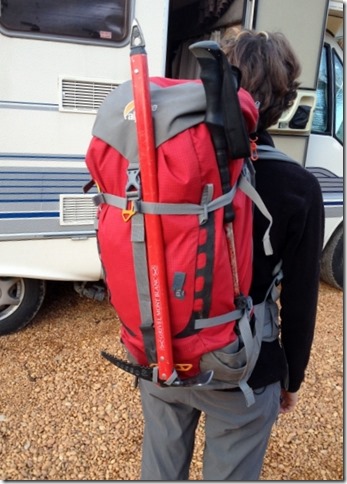
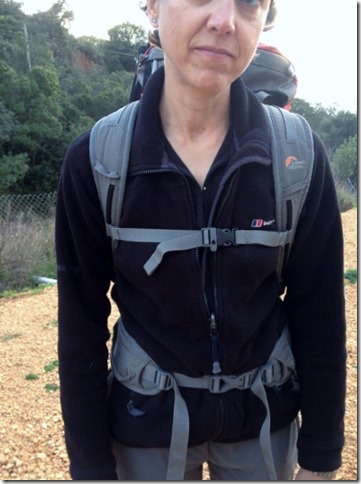
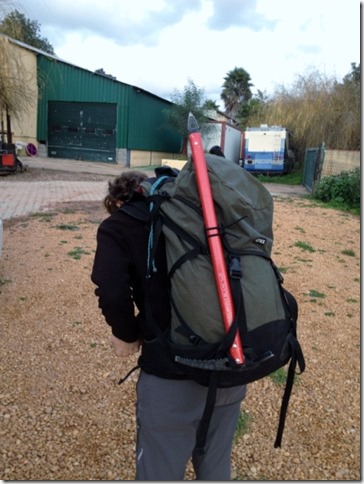
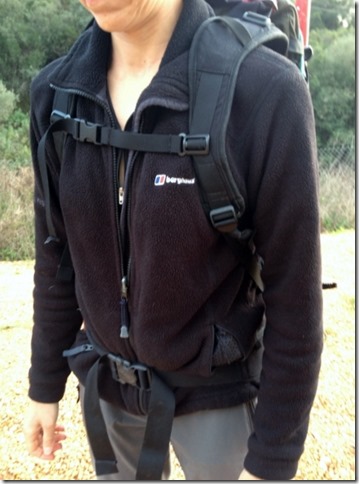
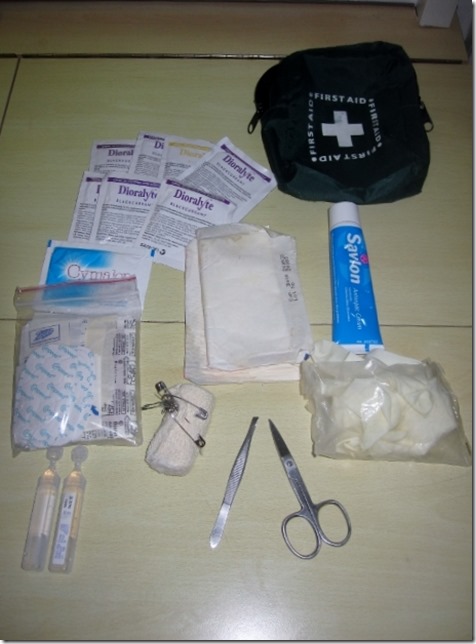
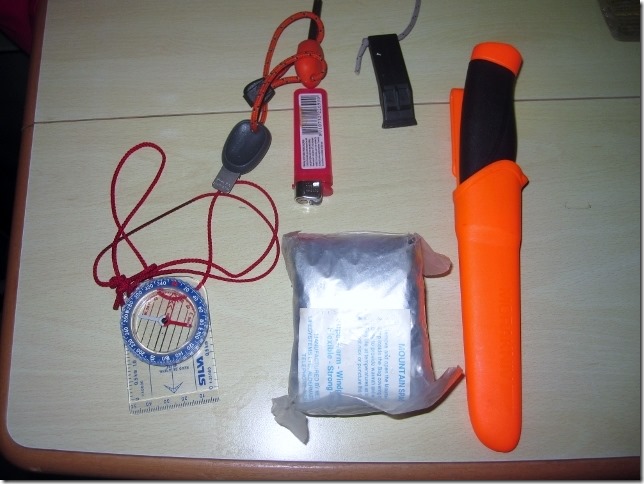






Muy bien equipados no cabe duda……….
Espero que no tengáis que utilizar la mayoría de las cosas, solo las más normales
Pero hay que ir preparados. Nunca se sabe lo que te puede pasar.